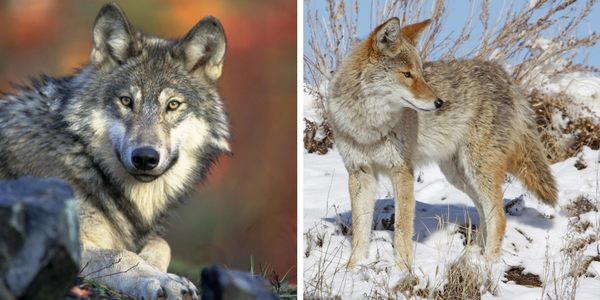

My husband and I stopped to listen and watched the reaction of our Olde English Bulldog, who apparently has no instincts and didn't pay attention to the ruckus at all. On a walk at Kettleson Hogsback, the sun started to set above the calm shallow lakes, and a high-pitched howl began in the distance. Being passionate about her subject, Marissa chooses the expert-led wolf watching tours organised by Naturetrek, which have brought her unforgettable sightings of a wide range of wildlife in some of the most spectacular regions on Earth.I still remember the first time I heard a coyote pack howl as dusk began to settle on the Iowa Great Lakes area. Marissa Ellis-Snow is a freelance nature writer with a special interest in wolves.

Seeing one traverse a vast open plain on a solo mission or observing a pack hunt is an unforgettable experience. The chance to visit a diverse variety of landscapes around the world on a wolf watching holiday can be a dream come true for those with an interest in these iconic wild creatures. Apart from being bigger, wolf tracks have clearly defined edges and show both the marks left by the inner and splayed outer toes as well as the claws (this is not usually the case with coyote tracks). Simply due to their physical body size, their scat is considerably larger than that of a coyote. When on a wolf watching tour, guides may point out the tracks and scat (faeces) of the animal. The coyote has a higher-pitched voice and its howls tend to be shorter, while wolves have a lower tone and a more continuous, drawn-out howl. The two animals’ respective vocalizations are also quite distinct. Whereas wolves have proportionately small ears, broad snouts and large nose pads, coyotes have narrower nose pads and snouts, and larger ears in comparison to their heads. While both can have similarly coloured coats (ranging from light grey to brown or black), their facial characteristics are markedly different.
#COYOTE VS WOLF HOW TO#
The two species’ intelligence, stamina and hunting techniques are fairly equal, but it is the sheer physical power and aggression of Canis lupus that sets it apart as such a fearsome animal.ĭistinguishing the adults of each species is not difficult for those who understand how to identify their physical differences (however, it can be almost impossible to tell pups apart). However coyote packs are generally smaller, usually containing between three and twelve animals, as opposed to wolf packs, which can number up to 40. Coyotes are omnivores, supplementing their diet of rodents, reptiles and other small animals with vegetation – in short, they are less predatory.īoth are pack animals, often hunting and raising young collaboratively. The latter voraciously and fearlessly hunts their prey, taking on animals as large as bison and winning. Coyotes are about as large as a medium-sized domestic dog, while wolves can measure up to 1.6 metres from nose to tail tip and weigh up to 90 kilograms. The two animals share a family ( Canidae), genus ( Canis) and order ( Carnivora), but Canis lupus has a far more aggressive nature than its smaller and lighter counterpart. Understanding the differences between Canis lupus and its cousin Canis latrans (the coyote) is a good start. In order to make your wolf watching experience as memorable as possible, it can help to be informed about the species’ behaviour and physiology. Wolf watching tours enable participants to encounter these shy and elusive animals both alone and in packs, and in a range of habitats around the world. Both are members of the canine family and, although they do display many similarities, their differences are just as marked. There’s often confusion between the coyote and the wolf.


 0 kommentar(er)
0 kommentar(er)
